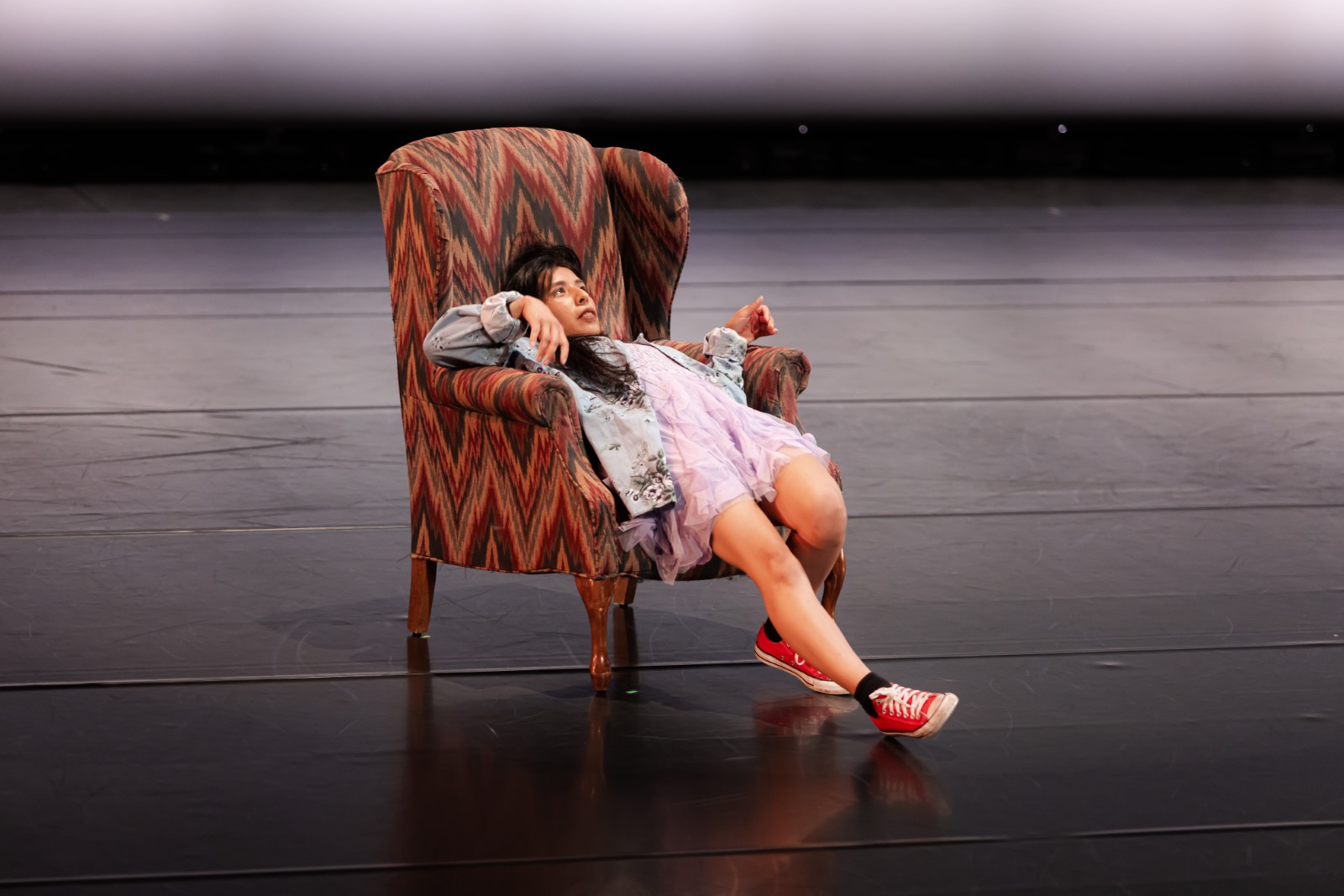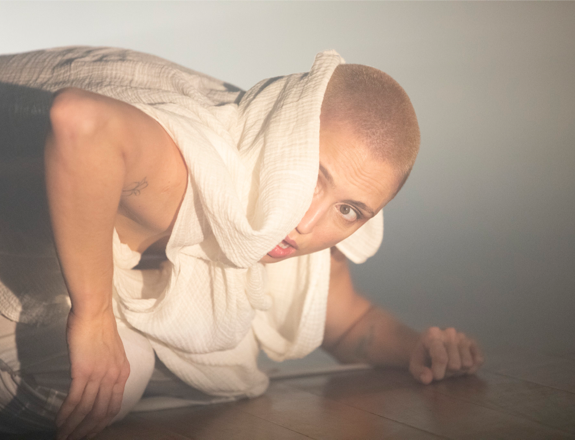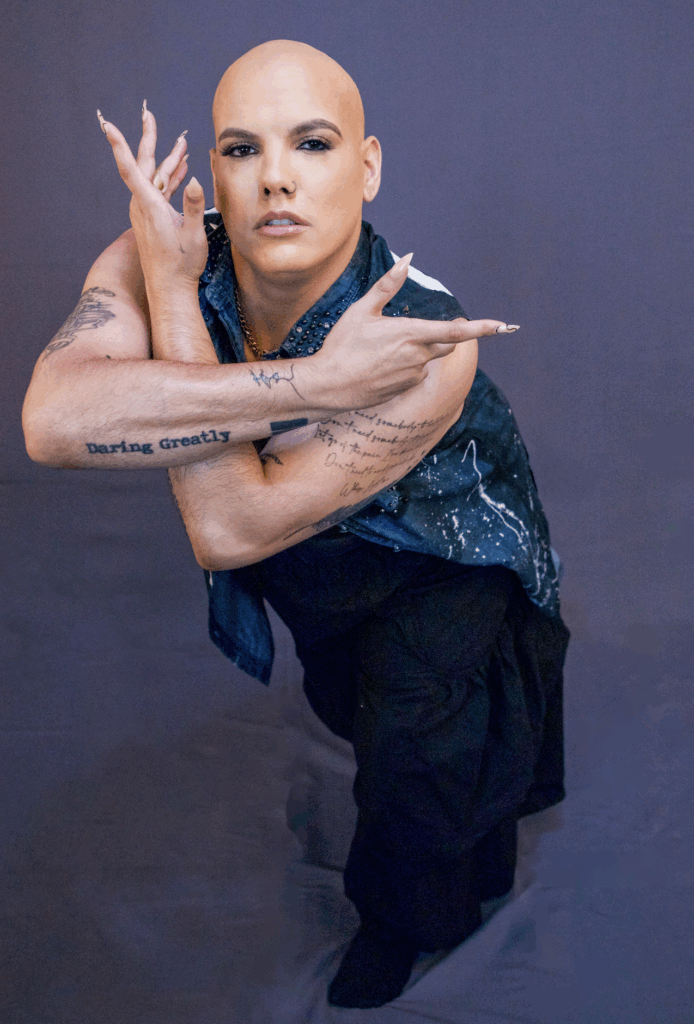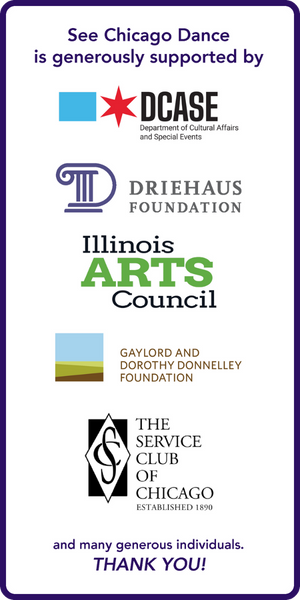October 5, 2025
By Isabel Campisteguy
On October 11, Cerqua Rivera Dance Theatre (CRDT) presents the inaugural “Chicago Latinx/e Contemporary Movement Festival” at the Ruth Page Center for the Arts. It is, as artistic director Wilfredo Rivera describes, “a long-overdue platform for contemporary Latinx choreographers to share their voices, histories and lived experiences.”

CRDT has made its mark by blending modern movement with original musical compositions to explore the intersection of heritage, identity and culture. For Rivera, the festival is the natural extension of this mission, focusing on the diverse paths that make up the Latinx experience. “It’s interesting to me that we’ve never had an opportunity to really focus on Latinx perspectives in contemporary dance,” he says. “This festival is about holding space for that really complex identity found within modern Latinx communities.”
The lack of opportunities for Latinx artistry is part of what makes this event so special; it is the first of its kind in Chicago, and only one of a few nationwide. Rivera has been imagining it for years, realizing that “instead of waiting for something to descend from anywhere, I just did it myself.” The response to submissions confirmed the need for such a festival, with twenty-two submissions pouring in, eight of which were from outside Chicago. Each proposal reflected a hunger for visibility and a need for space to explore the vast diaspora of Latinx voices.
The result is a program that spans themes of migration, queerness, ancestry, resilience and rebirth. Each work approaches the idea of the Latinx identity from a different angle, offering audiences a variety of viewpoints. Rivera intentionally curated the lineup to highlight multiplicity, with each piece “diving into the American diaspora… and how we label identity from various roads and histories.”
“las cosas que enter(r) Amos,” a duet choreographed and performed by Mexican American artists Alfonso Abraham Cervera and Irvin Manuel Gonzalez. The piece explores how Latinx social dance aesthetics are transformed through migration, ritual and queerness. Confetti, sweat and storytelling turn the stage into an altar, a place where queer bodies claim memory and pleasure as acts of resistance. Clubs, they suggest, are not an escape but are ofrendas—offerings of history and belonging.
“RÍA, Reconciliación Íntima con el Agua,” brings audiences face-to-face with water as both metaphor and medium. Choreographed and performed by Mexican artist Anniela Huidobro, the work, performed initially within a river, is translated to the stage as a meditation on memory, matter and life. She represents “artists that are space-based specific,” Rivera notes, emphasizing Huidobro’s environmental lens, and that water is “in our past as memory, in our present as matter and in our future as life.”

For choreographer and performer Sandy Perez, the journey is deeply personal. In “FirstGen,” Perez invites the audience into scenes of home life. With music by Jessie Reyez, Grupo Mojado, Carin Leon and recordings from Perez’s own family, the piece speaks to the disorientation and pride of growing up first-generation in America, balancing confusion with fierce love and a determination to belong.
Brazilian artist Paula Sousa brings a captivating character-driven work with “Alien,” an excerpt from her larger solo, “Dance of the End of the World.” For Sousa, this performance is simultaneously a conclusion and a rebirth. Her highly dramatic work embodies the cycle of endings and beginnings, capturing what it means to navigate culture and politics through continual transformation. “With every end,” she writes, “infinite possibilities for a new beginning arise and every small death is a fundamental part of the whole.”
CRDT member Ruben Andrés Castillo Gomez turns his gaze to his own immigration story in “Los Immigrantes.” Originally from Mexico, Gomez recalls the shock of moving to the U.S. for college and the alienation of living in a foreign culture. His choreography merges contemporary dance with American street styles, staging the collision of worlds and the compromises one makes to find voice and community in a new land.

Company dancer, Lilia Castillo Gomez, pays tribute to the women in her Cuban family with “La Guerrera” (female warrior). The piece is both personal and intergenerational, a retelling of her relatives’ immigration journey. Castillo Gomez utilizes her roles as granddaughter and artist to reclaim a lineage of resilience, while also exploring what it meant for women of that era to leave behind everything they knew. The result is a work that recognizes both extreme loss and fierce determination.
Choreographer, writer and speaker Mark Travis Rivera contributes an excerpt from “Witness,” a piece created at Ballet Hispánico’s Instituto Coreográfico. Inspired by the music and poetry of Harlem-based Afro-Latina artist AMYRA León, the duet is performed by one dancer with a disability and one without. The work becomes an exploration of love, survival and freedom, all while representing culture and art through a lens of inclusivity.

Closing the evening is a signature excerpt from CRDT’s own repertory, the “Land of Dreams” sections of “American Catracho,” choreographed by Rivera & Christian Denice. Dancers embody both the heaviness of exile and the determination of survival, reflecting on the experience of Central American men forging new lives in the U.S. “It’s the most hopeful part of the program,” Rivera says, “because it’s about pushing on, remembering why they went through everything and embracing a new life.” The final moments swell with both grief and renewal, as dancers envision a future shaped by resilience.
Though this first edition of the “Chicago Latinx/e Contemporary Movement Festival” is just one night, Rivera’s vision is expansive. He imagines the festival growing into a multi-weekend event that includes panel discussions, site-specific performances and tailored evenings for different artistic forms. For now, “Chicago Latinx/e Contemporary Movement Festival” indicates the beginning of something long overdue: a space where contemporary Latinx dance is not a guest or an outlier but the main event.
Cerqua Rivera Dance Theatre presents the premier of “Chicago Latinx/e Contemporary Movement Festival on Oct. 11 at Ruth Page Center for the Arts, 1016 N. Dearborn. Showtimes is 7:30pm. Tickets are $32-$72 at cerquarivera.org.
Copyright 2025, See Chicago Dance, All Rights Reserved

